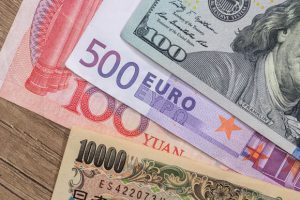Renminbi Cracks Seven for First Time Since Financial Crisis
The Chinese currency, the Renminbi, has been on a downward trend since the spring, apart from a brief recovery on the back of a resumption in trade talks.
But this week the currency dropped through the psychologically important Rmb 7 to the dollar barrier, hitting 7.1114 — a level not seen in the 11 years since the financial crisis.
Need buying strategies for steel? Request your two-month free trial of MetalMiner’s Outlook
The Renminbi is allowed to trade within a 2% band but has been hitting the lower level more than the upper for weeks as trade tensions have taken their toll.
Last week’s announcement that the U.S. would levy a 10% tariff on a further $300 billion of Chinese goods prompted a sharp sell-off by investors seeking safer havens and raised worries of capital flight.
The People’s Bank of China (PBoC) will come in for criticism in Washington and, no doubt, allegations of currency manipulation.
The reality is protecting a country’s currency against market devaluation can be a hugely expensive exercise.
The PBoC burned through $103 billion in 2016 trying to defend the currency, the Financial Times reports, with little to show for it.
Should we care, you may ask?
Well, yes. Currency movements do impact our own costs and global trade patterns, sometimes in unexpected ways.
For importers of Chinese goods, it could be good news, as it will allow Chinese exporters to lower prices. For U.S. exporters to China, however, it will raise prices in Renminbi of goods made in the U.S., such as Harley-Davidsons or agricultural goods, when they are priced in the local currency.
The ripple effect of the yuan’s devaluation spreads beyond just U.S.-China trade.
The hot money rapidly exiting Chinese assets poured into safe havens like the yen, driving the Japanese currency to 105.99 to the dollar, its strongest level since early 2018. A stronger yen will make goods imported from Japan more expensive to U.S. consumers, or pinch Japanese exporters’ margins and limit their ability to negotiate lower prices.
MetalMiner’s Annual Outlook provides 2019 buying strategies for carbon steel
Not surprisingly, stock markets took a hammering.
All Asian markets were down on the news, but so, too, were most Asian currencies. The Korean won fell 0.7% to Krw 1,213.30 to the dollar, while the Australian dollar dropped 0.8% to $0.6746, as markets feared the trade war could spread to a currency war.




Leave a Reply